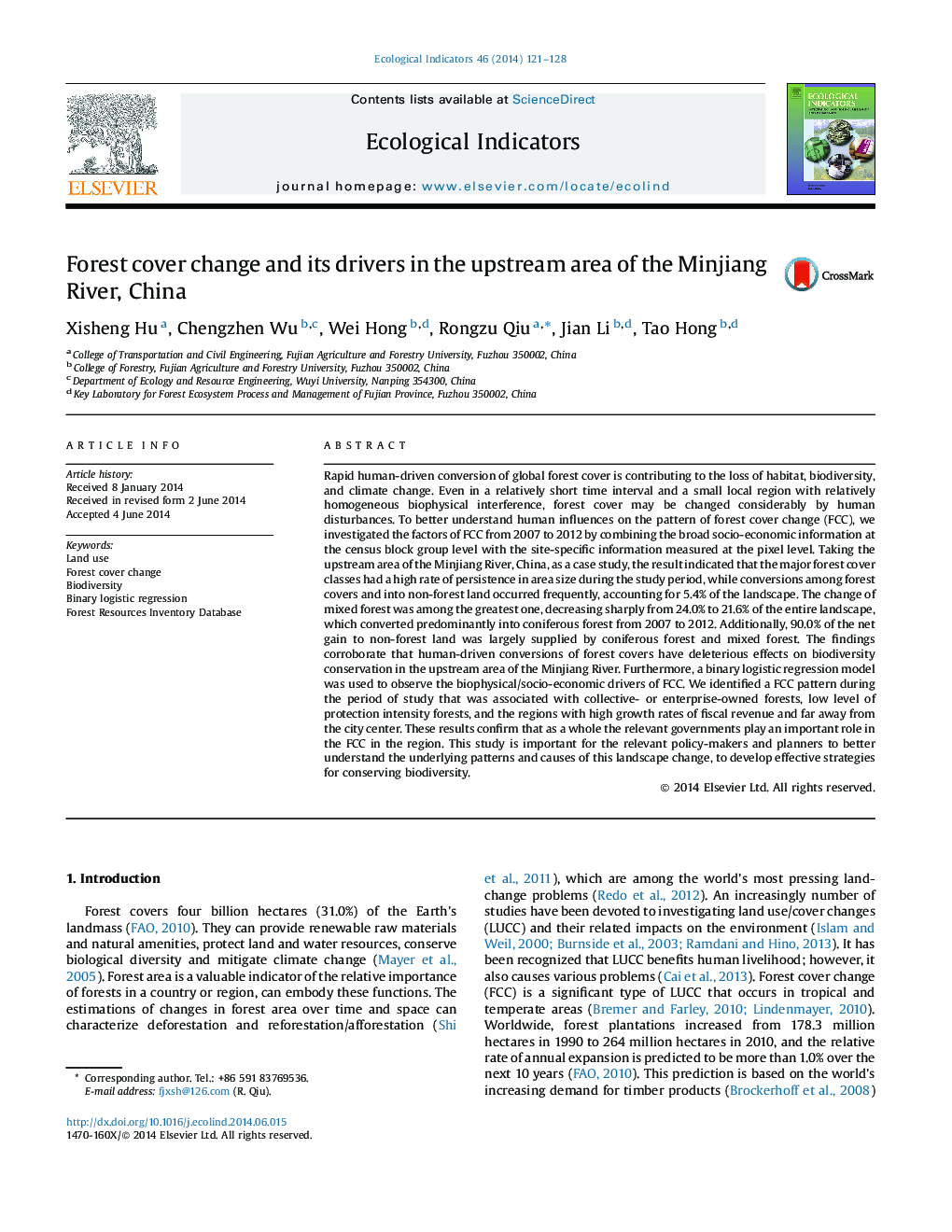| Article ID | Journal | Published Year | Pages | File Type |
|---|---|---|---|---|
| 6294842 | Ecological Indicators | 2014 | 8 Pages |
Abstract
Rapid human-driven conversion of global forest cover is contributing to the loss of habitat, biodiversity, and climate change. Even in a relatively short time interval and a small local region with relatively homogeneous biophysical interference, forest cover may be changed considerably by human disturbances. To better understand human influences on the pattern of forest cover change (FCC), we investigated the factors of FCC from 2007 to 2012 by combining the broad socio-economic information at the census block group level with the site-specific information measured at the pixel level. Taking the upstream area of the Minjiang River, China, as a case study, the result indicated that the major forest cover classes had a high rate of persistence in area size during the study period, while conversions among forest covers and into non-forest land occurred frequently, accounting for 5.4% of the landscape. The change of mixed forest was among the greatest one, decreasing sharply from 24.0% to 21.6% of the entire landscape, which converted predominantly into coniferous forest from 2007 to 2012. Additionally, 90.0% of the net gain to non-forest land was largely supplied by coniferous forest and mixed forest. The findings corroborate that human-driven conversions of forest covers have deleterious effects on biodiversity conservation in the upstream area of the Minjiang River. Furthermore, a binary logistic regression model was used to observe the biophysical/socio-economic drivers of FCC. We identified a FCC pattern during the period of study that was associated with collective- or enterprise-owned forests, low level of protection intensity forests, and the regions with high growth rates of fiscal revenue and far away from the city center. These results confirm that as a whole the relevant governments play an important role in the FCC in the region. This study is important for the relevant policy-makers and planners to better understand the underlying patterns and causes of this landscape change, to develop effective strategies for conserving biodiversity.
Related Topics
Life Sciences
Agricultural and Biological Sciences
Ecology, Evolution, Behavior and Systematics
Authors
Xisheng Hu, Chengzhen Wu, Wei Hong, Rongzu Qiu, Jian Li, Tao Hong,
